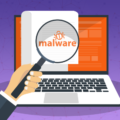
Google’s Chrome browser is one of the most popular choices for accessing the internet, but this popularity makes it an enticing target for hackers.
A substantial number of business activities are conducted online in the 21st century. Accordingly, most organizations find themselves accessing the internet with a browser almost every minute of the day. But each time we venture online we open ourselves up to numerous security threats. Malicious websites, of course, are a well-known security risk. At the heart of these threats is a determined effort to conceal their malicious payload. And that’s why a malicious website can be difficult to spot.
Chrome has an estimated userbase of 2.65 billion users and, as such, presents the perfect opportunity for hackers to cast their net far and wide.
How Chrome is Targeted
This latest malware attack specifically targets Chrome users who are running the browser on the Windows 10 operating system. Upon visiting an infected website, Chrome’s legitimate ‘advertising service’ delivers an advert which claims that Chrome requires updating. However, the advert contains a malicious link. Clicking this link will take you to a website entitled ‘chromesupdate’ which is designed to look like an official Google site. Unfortunately, it’s far from genuine.
The only thing that you will be able to download from this malicious website is malware. The payload in question is typical of modern malware, its main objective is to harvest sensitive data and steal cryptocurrency. Therefore, any login credentials you enter, while your PC is infected, can be logged and then transmitted to a remote server. Worst of all, the malware also grants remote access to your workstation. This opens you up to further malware downloads and, potentially, harnessing your machine into a DDoS attack.

How to Protect Your Browsing
Chrome is targeted by this latest campaign due to the manipulation of a Windows environment variable which allows Chrome’s advertising service to be exploited. The simplest way to avoid this attack is by using a different browser. But there’s a much bigger picture at play here. A better approach is to use the browser you are most comfortable with but remain vigilant. To do this, make sure you follow these best practices:
- Disable Download Privileges: It’s very easy for a busy employee to lose focus for a second and click on a malicious download. But, in the case of this specific threat, an application update should be something that an IT professional handles. To minimize the risk of malicious downloads taking place, disable download privileges for your employees.
- Use Anti-Malware Software: Malicious websites can be detected prior to accessing them thanks to the power of anti-malware software. Backed by huge databases, which are regularly updated, anti-malware software can instantly alert users when they try to access websites known to be malicious.
- Don’t Be Rushed: The main strategy employed by malicious websites will be to instill a sense of urgency into their call-to-actions. For example, the threat of an imminent infection if a Chrome update is not installed is designed to create urgency. And it’s this urgency which can catch you off guard. So, if you feel that a website is rushing you into making a decision, always make sure you speak to an IT professional before going any further.
For more ways to secure and optimize your business technology, contact your local IT professionals.







